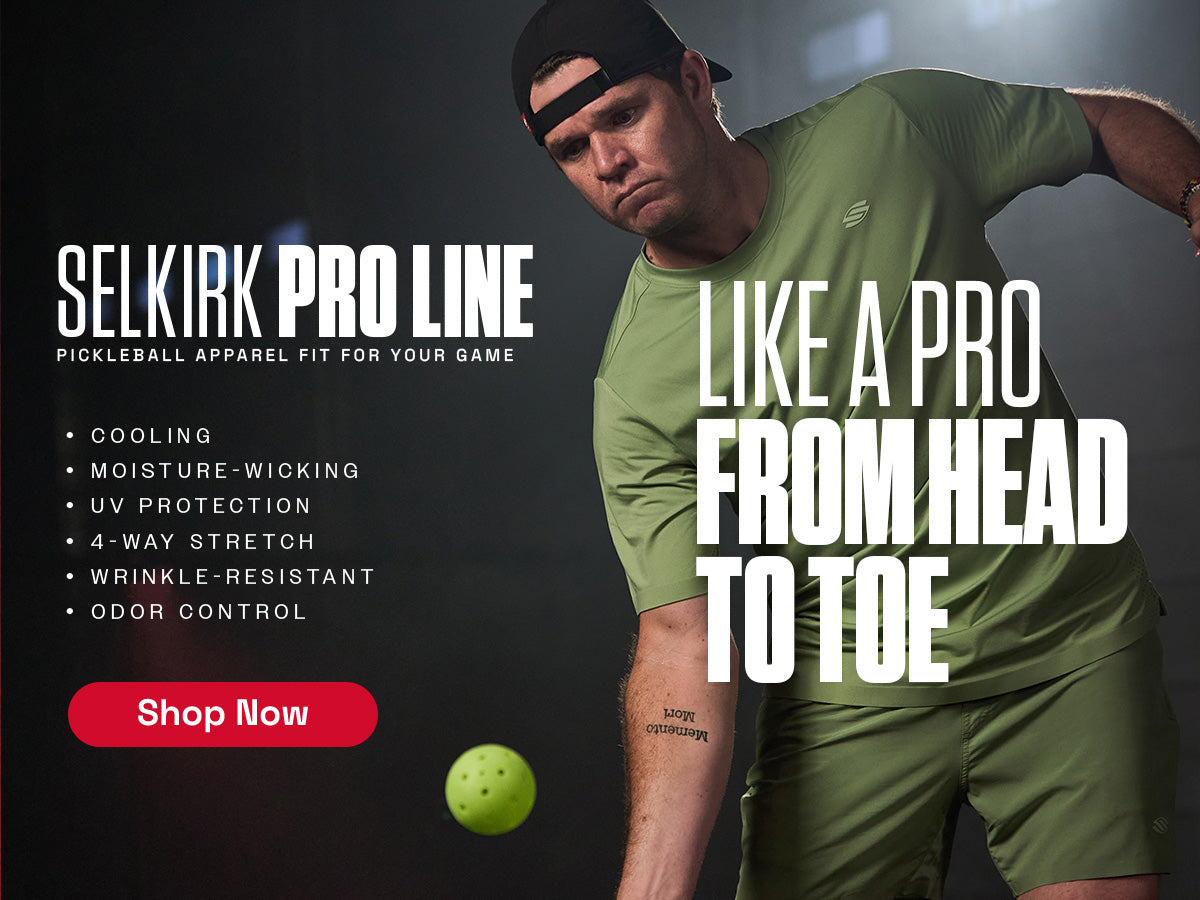
When most people think about training for pickleball, they often think of drills to get better at dinking or fast hands.
However, there is another vital component to a complete pickleball training regime: strength training.
Strength training helps you prioritize your fitness on the court and prepares your body for the movements you’ll be making during a match.
In this Selkirk TV Original, join professional pickleball performance coach Connor Derrickson as he demonstrates the 5 most important movement patterns to train in pickleball that can make you lethal on the court.
You don’t need to be a professional weight lifter — use whatever weight level you feel comfortable with — but you do need to be proficient at the movements to ensure you’re safe on the court.
Squatting
It’s no secret that you will spend a lot of time at the kitchen line in a squatting position. To help prepare your lower body for this movement, spend some time performing squats.
Grab a kettlebell and hold it at chest height. Start from a standing position and push your hips back as if you are sitting in a chair. Keeping your knees over your toes and your lower back neutral, sink as low as you can before returning to standing.
As you get stronger in the movement, try sinking lower into the squat to increase your mobility. When you feel comfortable with the motion, add more weight.
Hinging
Sometimes, you’ll need to be able to dig out balls that are slammed down at your toes. It’s important to have a proper hinging technique so you’re not jerking your body around.
To prepare for these motions, add some Romanian deadlifts to your strength routine. Hold your kettlebell at your waist, and with knees slightly bent, begin to hinge at the hips, pushing your glutes back.
Run your kettlebell along the front of your legs to about shin height and then rise back up, driving from your hips.
As you get stronger, add more weight or consider performing one-leg Russian deadlifts.
Pushing
To be able to have a powerful smash or compete in hands battles, you’ll need some arm strength.
The best way to boost your strength is a plain pushup. Keeping your core engaged and your glutes squeezed, get into a pushup position with your wrists under your shoulders.
Slowly lower yourself down, with your elbows at a 45-degree angle. If it’s too difficult to perform a pushup from your toes, lower yourself to your knees and work your way up to a standard pushup.
Pulling
When you’re reaching for balls at the kitchen line, you want to ensure your back muscles are strong enough to support your movements.
Grab a set of dumbbells or your kettlebell and perform a row. Keeping your spine long and neutral, bend your knees slightly and hinge at your hips to send your glutes back. Your back should be at a 45-degree angle.
Now, start with your arms fully extended and pull your elbows toward your hip. Be sure to squeeze at the top of the motion.
Lunging
In pickleball, you will spend plenty of time getting low and lunging for balls, so you must have a strong base.
You should work in a variety of lunging positions in your routine, including split squats, lateral lunges, and reverse lunges. With all the movements, start with a comfortable weight level and work your way up as you get stronger.
For a typical split squat, start facing forward with feet hip-width apart. Step one foot behind you just far enough that you can drop your back knee straight down. You should not be stretched so far that your knee goes down at an angle. Drop your knee down and come straight back up, pushing into the heel of your front foot.























